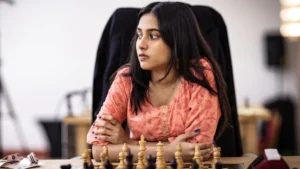Nepal is a country known for its vibrant culture and scenic landscapes. However, it is also home to a rich history of games that have been a part of the lives of local people for generations. These games are deeply rooted in the rural lifestyle of Nepali communities and aren’t just a source of entertainment but also a vital means for physical fitness and mental health.
These games have been passed down by generations without a single documented rule book and continue to be a huge part of the local people. Despite the growing influence of modern games, sports like Dandi Biyo, Kho-Kho, Bagh-Chal, and Guchcha continue to be celebrated even today for their availability, simplicity, and a sense of belonging. This article aims to explore the 4 traditional games of Nepal that continue to influence the Nepali community even today.
4 Traditional Games Of Nepal
Dandi Biyo
Dandi Biyo is one of the most popular traditional games of Nepal, often liked due to its resemblance to an Indian game, Gilli-Danda. It’s played with a long stick (Dandi) that is used to strike a smaller piece of wood (Biyo) to launch it as far as possible. It’s played individually, and players take turns to strike the biyo as far as possible, and points are awarded based on the distance; the greater the distance, the higher the points.
The game requires skills, precision, and quick reflexes, making it both exciting and challenging. But more importantly, it’s beloved among generations due to its simplicity and availability because of the minimal objects used in the game.
Kho-Kho
Kho-Kho is a team sport that focuses on speed, agility, and strategy. It’s played between two teams, each consisting of twelve players, and involves chasers attempting to tag runners within a set time limit. The chasers sit in a row in a straight line in alternate directions and pass the responsibility of chasing by tapping teammates back and saying Kho.
The runners then dodge and weave across the field, trying to avoid being tagged. Kho-Kho is specifically popular in rural areas and is often featured during festivals and school events, making it one of the top traditional games of Nepal.
Bagh-Chal
Bagh-Chal, or literally, “Tiger and Goats,” is definitely one of the most exciting traditional games of Nepal. It’s a strategic board game played on a 5×5 grid, where one player controls four tigers while the other one manages twenty goats. The tigers aim to “eat” the goats by jumping over them, while the goats attempt to escape the attack by blocking their movements.
The game requires keen strategic planning and reflects the rural lifestyle of the Nepalese society. It’s played in small villages and towns due to its minimalistic requirement, such as stones and chalk, and remains a highly played game among children and adults.
Guchcha
Guchcha or marbles is a simplistic game that has been a favorite among Nepali children. Players use their thumbs to flick marbles towards a specified target or into holes drawn into the ground, aiming to win their opponent’s marbles through skillful shots. The game is popular due to its easy setup, requiring only a handful of marbles and a patch of open ground. Guchcha remains one of the top traditional games of Nepal despite the development of digital games.
Also Read: The Games of Russia’s Past: 3 Games to Try






























